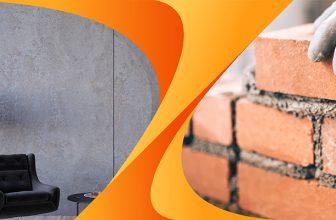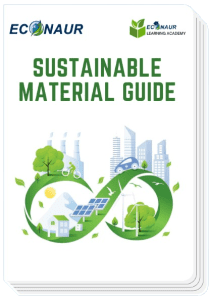Understanding all about Roof Insulation & its importance
The sequestration of a roof is just as important as the external material. Sequestration is important to the life of your roofing system and has been used for centuries. Over the times, sequestration has changed and acclimated, but its purpose is the same; keeping heat inside when you need it and outdoors when you don’t.
The significance of Roofing Insulation
Insulating the roof of your structure saves you plutocrat every time. By controlling the internal structure ,temperature sequestration saves the need for energy. You no longer need as heating and air exertion. Sequestration reduces the quantum of energy demanded to run the structure. Using lower energy means you’re keeping plutocrat in the bank and guarding the terrain by leaving behind a lower carbon footmark.
Roofing is exposed to further environmental pressures than any other part of the structure, especially rainfall. Rain, snow and sun exposure, wear down roofing and can beget damage which interferes with sequestration and energy savings.
1. What Is Roof Insulation?
Unquestionably, the roof is an integral part of any building structure as it protects the structure against extreme weather. Without it, the walls and even the foundation of any structure are defenseless to damage. A roof that is well-maintained can act as an excellent defense element for the building shielding it from all harsh elements – hence roof insulation is imperative.
According to the U.S. Department of Energy heating and cooling homes accounts for roughly 48 percent of the overall energy consumption. And a typical house loses nearly 44 percent of the available energy to poor sequestration. Explaining in simple words, deprived of any material blocking it, warm air would rise overhead naturally and cold air will descend – Performing in abrupt innards temperatures. There may also be significant heat earnings through roofs during the summer. This means that separating a garret, garret or the roof is a simple and effective way of reducing heat loss, the size of heating and cooling systems, energy operation and so carbon emigrations. Hence, if you wish to ameliorate energy efficiency in a home, you would need to work on your home sequestration.
Here is a simple video that explains roof insulation:
2. Different Types Of Roof Insulation
There is a range of different materials available that are easily available for roof insulation, a few of which are comparatively cheap and can be installed without any specialist expertise:
Blanket Insulation Or Matting Insulation
One of the most common and easiest to install is blanket insulation. These generally come in foil-backed rolls or rafters, and are held in place using timber battens between the rafters or joists. Blanket insulation is usually made of glass wool or mineral, but sometimes these are also made from plastic fibers and natural fibers like cotton and sheep’s wool.
Foam Boards
Rigid panels of insulation that are first cut and then fitted in place. Commonly foam boards are made of polystyrene, polyisocyanurate, and polyurethane.
Radiant Barriers
Radiant barriers constrain heat transfer by thermal radiation and are more effective in hot climatic conditions. These can be easily stapled to the underside of the rafters. According to studies, this type of roof insulation can significantly gain heat.
Blown-In Insulation
This type of insulation involves cellulose mineral fibers being blown into a void in the roof space. These demand specialist equipment and expertise, but again, these are very quick to install and are very effective for spaces that have limited access, like the gaps between roof joints.
Spray Foam Insulation
Here, spray foam is formed of polyurethane, and then it is sprayed as a liquid which slowly expands to up to 100 times its original volume. Once it sets, it creates an effective thermal and noise insulating layer.
3.Advantages Of Insulation
As a homeowner, there are multiple reasons to insulate, here are a few:
- Energy and cost efficiency – With efficient insulation, you will save energy and money. Around 30 percent of a building’s heat loss is in the roofing. When an efficient insulation system is properly installed, you are saving both.
- Adds an additional layer of protection – It prevents damage in the long run that can potentially come from moisture and ice dams.
- Reduces carbon footprint – Insulating your roof is one of the most important energy-saving projects you can complete in your home. Studies suggest that efficient insulation reduces CO2 emissions ,which aid in combating air pollution.
- Prevents the growth of molds – Insulation is the best tool to prevent molds from forming. Because insulation manages the temperature and moisture of a building, it directly affects the growth of molds.
Roof insulation may add to your expenses during construction for now, but soon you would see that you are getting more returns in the term of savings in the long-run.
4.Roof Insulation – Inside Vs. Outside
The insulation of your roof can be done either from inside or outside:
Insulating your roof from the outside has many advantages. In addition to avoiding emptying any rooms in the attic, insulation from the outside does not cause a decrease in your living space and limits the risk of thermal bridges. This is a preferred solution if you are renovating a facade or roof. Among other benefits, this technique leaves the frame apparent from the attic.
Insulation from the inside is a suitable solution, mainly in new construction. This roof insulation method is ideal if you have not yet fitted out the attic and allows you to keep the roof covering system unscathed.
5. Things To Consider Before A Roofing Insulation Installation
If you feel that you need roofing insulation, here are a few things you should know and consider more things to know.
Insulate Flat Roof From Above
A flat roof should if possible be insulated from above. A layer of rigid insulation board could be added either on top of the roof’s weatherproof layer or directly on top of the timber roof surface, with a new weatherproof layer on top of the insulation.
Decide Whether To Insulate Your Attic Floor Or Roof
If you plan to utilize your attic space as a bedroom, you need to keep it warm as the rest of the house. In that case, insulate the roof. But if you don’t use your attic, you can insulate the floor. This option is easier and more affordable. Insulating both the attic floor and the roof is possible. Just keep in mind that this process is difficult and expensive.
Get A Roof Replacement During The Fall Season
Fall makes a perfect time to replace your old roof. Your roofing contractor can do a roof insulation foam installation at the same time. This prepares your roof for the winter. With new roofing insulation, you save on winter heating.
Beware Of Fire Hazards
Find a qualified and legit roofing contractor that knows how to install roof insulation foil or your preferred material. Incorrect installation can create fire hazards.
Source – Gomsmartbrickc.com, adcoroofing.com







